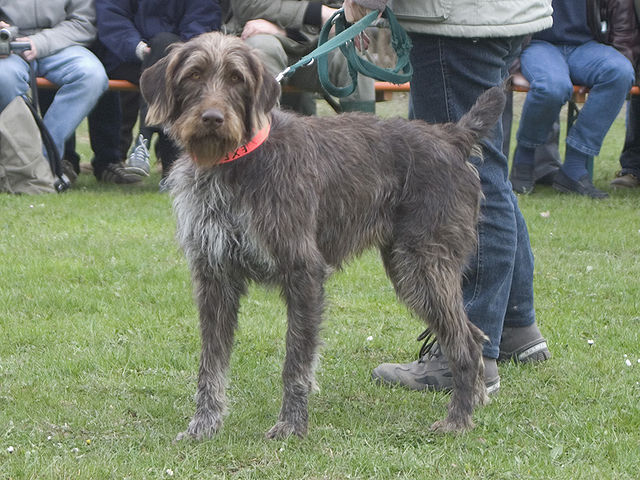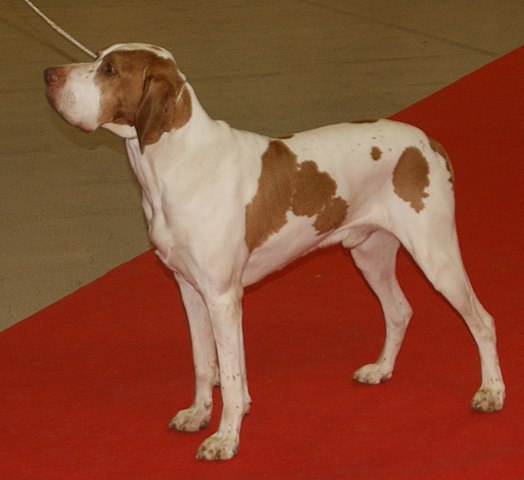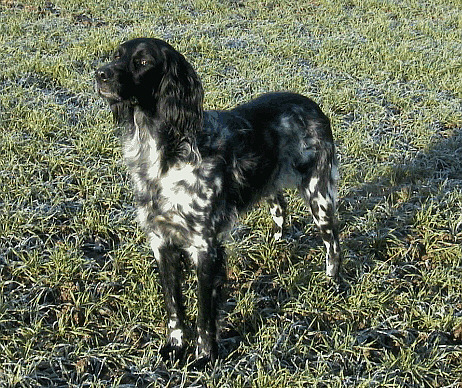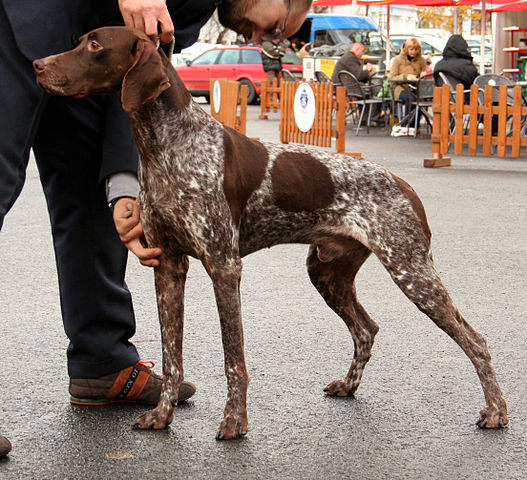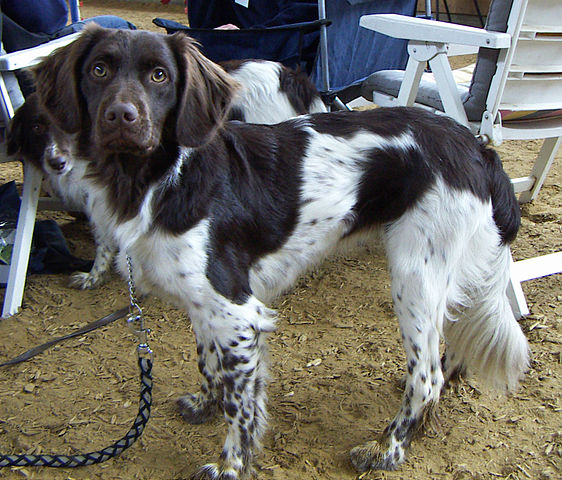The Old Danish Pointing Dog is a versatile gun dog, specializing in pointing. This breed came from mixing various “farm dogs” with dogs brought to the area by gypsies. It is likely that Bloodhound ancestry contributed. Medium in height but with a bulkier build than other similar breeds, the Old Danish is strong yet agile, and has an excellent nose for tracking. Like all sporting/gun dog breeds, he requires lots of exercise as well as daily activities to keep him busy – he is very hard to tire out!
Loyal and easy to adapt into the home (with lots of exercise), the Danish Pointing Dog has a balanced, stable temperament. He is very affectionate and loving to his people which makes him a great addition into family life. He gets along well not only with children, but with other pets as well (although might be dangerous around small pocket pets or birds). He can be calm and quiet in the home, but should be kept in a property with a large backyard rather than in an apartment setting. Also of note, this social pointer prefers to spend his time with people and can be prone to separation anxiety if left alone frequently.
The Old Danish is a fast learner and desires to please his master above all, which makes him easy to train. To keep training exciting, randomize the order of commands given to keep him on his toes! This smart dog appreciates when training is kept fun and surprising. As a gun dog, he also takes very quickly to any type of retrieval command and/or task that allows him to use his gifted nose. His hardworking nature means that he is always ready for the next task asked of him, as long as it is kept fair and not overly harsh. It is recommended to start training early for best results.
ODPs love spending time outdoors – whether it be swimming, following a scent, or participating in a hunt with their owners. They need to be given hours of exercise each day in order to stay fulfilled (and keep them from becoming destructive). Luckily grooming is easy and health care is generally simple, because this will give owners more time to focus on keeping the dog active each day! It is for this reason that hunters often make the best owners for these dogs, as they are often out in the field (or training to be out in the field), however active families or individuals can make this breed work for them if they are willing to put in the effort and time. 
With strangers, the Old Danish Pointing Dog can be slightly wary at first without being aloof. Make sure to socialize early so that he doesn’t become overly fearful, however most individuals are fairly brave – especially when socialized. Luckily aggression isn’t commonly seen in the breed and most dogs remain stoically good-natured around strangers. Well-socialized and trained Old Danish dogs are capable of all sorts of social tasks – whether it be hiking in a public area or competing in spectator-heavy dog sports such as nosework, agility, frisbee or flyball competitions!
The Old Danish is usually a fairly healthy breed however hip dysplasia, eye issues and elbow dysplasia can occur. Prospective puppy owners should vet the breeder to make sure health testing is done, which will lessen the chances of issues as the puppy gets older. Most members of the breed grow up without any problems, however, and average lifespan tends to be 13-14 years.
Danish Pointing Dogs are well-known in their native Denmark but quite rare in other parts of the world. Here in the United States, they are recognized by the UKC but rarely if ever seen in this country. This is not a new or developing breed either, having been created in the early 1700’s. Although many Americans would not be able to handle the exercise requirements of this breed, plenty of active and experienced homes do exist here, and there are undoubtedly many that would love to own such a loyal and even-tempered dog… if they only knew about this well-kept secret.


